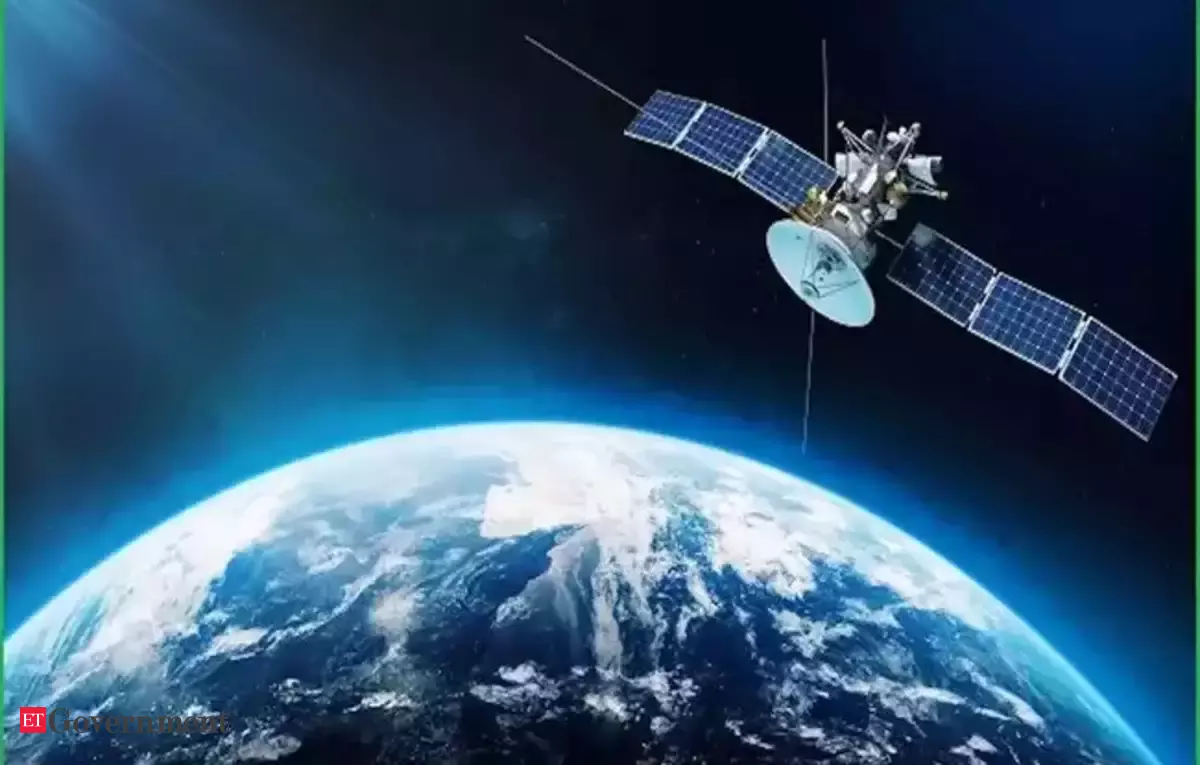
Indian Air Force chief Air Marshal V R Chaudhari had emphasised the reality of the militarisation of India’s space sector, highlighting its historical dual-purpose nature encompassing both civilian and military applications.
Half a decade ago, India’s Ballistic Missile Defence Programme made a significant breakthrough, leaving a memorable mark in space exploration. At Abdul Kalam Island, a momentous event unfolded as an interceptor missile launched, blazing through the sky with vivid orange streams behind it. Within seconds, it successfully targeted Microsat-R, an operational Indian satellite orbiting approximately 300 kilometres above the Earth.
The collision, a kinetic force to behold, shattered the satellite into countless fragments, marking India’s inaugural successful anti-satellite (A-SAT) test. This feat catapulted India into an elite echelon, becoming the third country globally to demonstrate this sophisticated capability. The spectacle of the missile’s majestic vertical ascent, culminating in the precise destruction of the satellite, underscored India’s burgeoning prowess in advanced missile technology.
During a nationally televised speech, Prime Minister Narendra Modi praised India’s A-SAT test as a significant accomplishment, suggesting its importance as a deterrent against potential threats to the country’s space assets. The underlying message was clear – India’s strategic move was primarily aimed at addressing China’s comparable capabilities, considering Pakistan’s limited capacity in this area.
Observers couldn’t ignore the historical backdrop, remembering China’s similar test in 2007, which targeted a weather satellite at an altitude exceeding 850 kilometres. With this achievement, India joined a select group of nations equipped with the capability to safeguard their space assets, solidifying strategic dominance in this crucial domain.
However, the A-SAT test wasn’t devoid of controversy. Criticism ensued regarding the substantial debris it generated, estimated at approximately 35,000 fragments larger than one centimetre. Among these, several sizable remnants, measuring up to four inches, are projected to orbit the Earth at high velocities for decades, posing potential risks.
Indian Air Force Chief Air Marshal V R Chaudhari had earlier emphasised the reality of the militarization of India’s space sector, highlighting its historical dual-purpose nature encompassing both civilian and military applications. Drawing parallels to the German V-2 rocket, Chaudhari underscored the evolution of space as a domain integral to strategic defence. Notably, he rebranded the Indian Air Force as the “Indian Air and Space Force,” aligning it with its French counterpart.
Chaudhari’s remarks echoed those of Indian Chief of Defense Staff (CDS) General Anil Chauhan, who emphasised the evolving nature of warfare in India. Chauhan advocated for the advancement of dual-use technologies, emphasising the expansion of Navigation with Indian Constellation (NavIC) satellites to bolster India’s intelligence, surveillance, and reconnaissance (ISR) capabilities.
These statements signify the securitization and militarization of space within India’s strategic discourse, where technology, assets, and infrastructure are increasingly geared towards military objectives. Key initiatives such as the establishment of the Defense Space Agency (DSA) and Defense Space Research Organization (DSRO) in 2019 underscore the integration of military space assets, particularly in enhancing ISR capabilities.
Furthermore, the launch of Mission Defense Space at DefExpo 2022 in Gujarat has catalysed defence technology and space diplomacy, facilitating private sector involvement to drive innovation in the defence sector. India’s Space Policy 2023, while not explicitly referencing the military sector, advocates for bolstering space capabilities to safeguard national socio-economic development and security interests. The policy also emphasises fostering greater private sector participation across the space value chain, signalling a holistic approach towards advancing India’s space endeavours.
U.S. – India Cooperation
The burgeoning cooperation between India and the United States, particularly in the defence and space domains, heralds a new era of strategic partnership and economic collaboration. The evolution of bilateral statements explicitly referencing the space domain within the realm of defence underscores the growing synergy between the two nations.
Traditionally reliant on Soviet/Russian imports for approximately 85% of its weapon systems, India has embarked on a path of diversification in defence procurement since 2010. Notably, U.S. military sales to India have surged to $7.93 billion between 2010-2017, a significant increase from the $1.39 billion recorded in the previous decade. The GE-F414 engines deal, slated to power the indigenous Tejas Mk2, along with the acquisition of 31 MQ-9B drones from the United States, signifies a deepening of the India-U.S. bilateral defence trade, expected to reach $25 billion.
India-U.S. dialogues within the space domain are poised to catalyse the development of defence industrial ecosystems, further augmenting the economic partnership between the two nations. As the United States emerges as India’s largest trade partner, with bilateral trade surpassing that of China-India trade, valued at $128.6 billion, India’s strategic realignment of supply chains away from China and Russia is set to bolster the defence industrial ecosystem.
Pacing Up with China
India faces critical challenges in its space defence strategy, particularly in responding effectively to potential threats from adversaries like China. India has showcased its proficiency with kinetic anti-satellite (A-SAT) weapons; however, it is crucial to recognize the constraints and seek avenues for continued progress. The asymmetrical nature of space warfare, combined with China’s extensive military satellite arsenal, poses a challenging situation for India. Counteracting assaults on its space assets using kinetic interceptors could worsen space debris concerns, potentially impacting worldwide space activities.
To address these challenges, India must invest in a diverse array of kinetic energy weapons (KEWs), directed energy weapons (DEWs), and cyber, and electronic warfare capabilities. These additional tools are vital for enhancing India’s deterrence posture and mitigating vulnerabilities in the face of evolving threats.
Given the strategic importance of space assets for India’s defence posture, especially amidst ongoing border tensions with China, the urgency to bolster space defence capabilities is paramount. While India has traditionally focused on leveraging space assets for reconnaissance and communication, recent developments underscore the imperative of developing robust counter-space capabilities.
Furthermore, India should actively engage in regional and global dialogues on disarmament and arms control measures concerning space weapons. Such initiatives can help mitigate the risk of an arms race in space while fostering a peaceful and stable space environment.
However, prematurely pursuing arms control and disarmament measures in response to China’s aggressive space posture may undermine India’s security interests.
Vaibhav Agrawal is a Senior Defence Journalist and Editor at Business Upturn. He covers complex issues surrounding subjects like Space, Defence & Geopolitics. He can be reached at vaibhavmag1@gmail.com















